Removal
Drain the engine coolant. (2-18)
Place a rag under the thermostat case.
Remove the thermostat case cap (1).

Remove the thermostat (2).
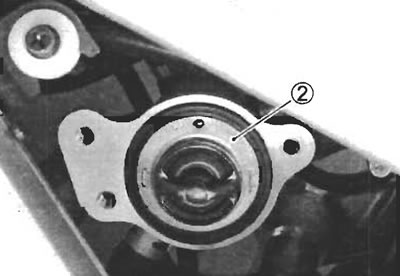
Inspection
Inspect the thermostat pellet for signs of cracking.
Test the thermostat at the bench for control action, in the following manner.
Pass a string between flange, as shown in the photograph.
Immerse the thermostat in the WATER contained in a beaker, as shown in the illustration. Note that the immersed thermostat is in suspension. Heat the water by placing the beaker on a stove (1) and observe the rising temperature on a thermometer (2).
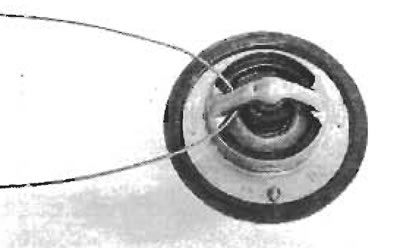
Read the thermometer just when opening the thermostat. This reading, which is the temperature level at which the thermostat valve begins to open, should be within the standard value.
Thermostat valve opening temperature:
- Standard: Approx. 88°C (190°F)
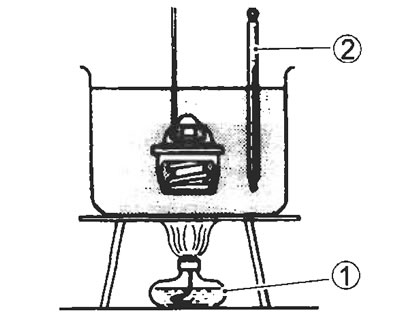
Keep on heating the water to raise its temperature.
Just when the water temperature reaches specified value, the thermostat valve should have lifted by at least 8.0 mm (0.31 in).
Thermostat valve lift:
- Standard: Over 8.0 mm at 100°C (Over 0.31 in at 212°F)
A thermostat failing to satisfy either of the two requirements, start-to-open temperature and valve lift, must be replaced.
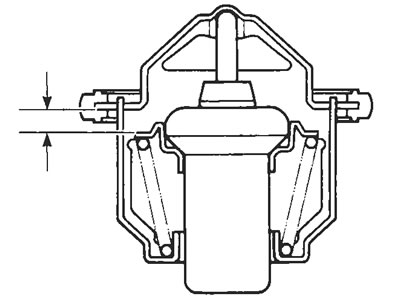
Installation
Apply engine coolant to the rubber seal on the thermostat.
Install the thermostat.
Note: The jiggle valve (A) of the thermostat faces upside.

Install the thermostat case cap (1).
Note: The rib (A) of the thermostat case cap should be faced upward.
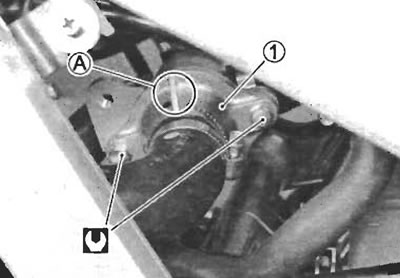
Tighten the thermostat case bolts to the specified torque.
- Thermostat case bolt: 10 N·m (1.0 kgf·m, 7.0 lb·ft)
Pour engine coolant. (2-18)
Bleed air from the cooling circuit. (2-19)
